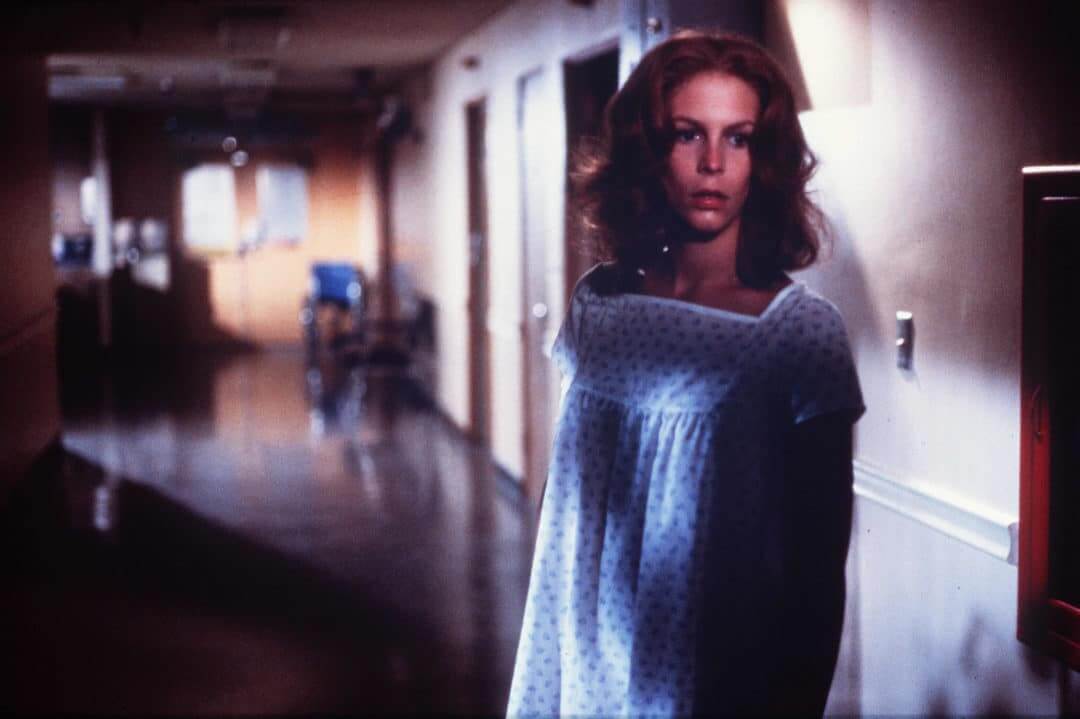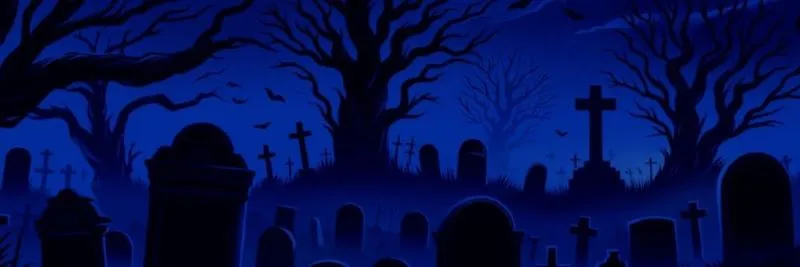With 11 Halloween films over 40+ years, horror fans have experienced many iterations of masked killer Michael Myers in his trips back to Haddonfield, Illinois. Each film shares a special place in horror buffs’ hearts (even Halloween: Ressurection, somebody loves you). With so many entries in the franchise, have you ever asked yourself Which film truly captured “The Shape” of evil best?
A franchise this large is bound to generate numerous answers, though many likely lean towards the original 1978 Halloween. With all due respect to John Carpenter’s cinematic masterpiece, for me, evil takes it’s truest form in the moments after the first film ends. In this retrospective, I would like to take you on an in-depth look at how (and why) 1981’s Halloween II captured the darkest nature of Michael Myers and the mystique of the holiday he terrorizes.
Plot Summary

Beginning seconds after the original’s cliffhanger ending, Halloween II continues the night that just won’t end for Laurie Strode (Jamie Lee Curtis). Laurie is taken to the local hospital to recuperate from her injuries, and news begins to spread of the carnage Michael Myers (Dick Warlock) has left in his wake. Dr. Sam Loomis (Donald Pleasence), who just saw evil incarnate, frantically searches the streets for his missing patient. Meanwhile, Haddonfield begins to descend into chaos from the evil it now houses. Mistaken for the killer, an innocent teenager dies in a fiery police cruiser wreck. Members of the town form a mob around the old Myers house. “The Shape” is still on the loose, however, and has its sights set on its missed target. After hearing Laurie’s whereabouts over a radio news broadcast, Michael follows her to Haddonfield Memorial Hospital. The infirmary slowly transforms into a house of horrors as he picks off the staff one by one until only a drugged, delusional Laurie is left.
Embarrassed by the incident and afraid of its ramifications, the governor of Illinois orders Dr. Loomis away from the area. While leaving town, Loomis learns that a recently-unsealed file on the case reveals Laurie Strode to be none other than Michael Myers’ sister. Loomis realizes Michael’s objective and forces his police escort back to the clinic by gunpoint. They find Laurie just as The Shape approaches, but are cornered into the hospital’s operating room. Laurie shoots out Michael’s eyes, and he begins to swing wildly at her with a scalpel. Dr. Loomis realizes the only way to destroy evil is to burn it to the ground, and he ignites the gas-filled operating room, sacrificing himself in the process. The sole survivor for the second time in one night, Laurie is loaded into an ambulance and hauled away, never to be the same again.
Creative Continuity

Halloween II benefited from something most other sequels lack – filmmaker continuity. Both director John Carpenter and producer Debra Hill returned to write the sequel, the film was shot once again through the brilliant eyes of cinematographer Dean Cundey, and almost the entire cast of the original returned. Although Carpenter did not direct personally, director Rick Rosenthal tried to emulate the same feel of the original due to it taking place the same night. This continuity allowed the story to progress instead of reinventinig itself like many sequels tend to do. Though the flow of the story remained steady, certain elements were bound to change. And change they did.
Through a combination of creative choice and perhaps some eerie coincidences, Halloween II weaves a darker, more evil tale than the original. Stuntman Dick Warlock, who replaced Nick Castle as Michael Myers, portrayed the character with more robotic, artificial movements. The iconic mask had dirtied and warped since its use in the first film, partially due to time spent under Debra Hill’s bed. The wear and tear gave the mask a scowling, almost angry appearance. Even the iconic film score transformed into a more malevolent sound. Composer Alan Howarth overdubbed Carpenter’s original tracks with new synthesizers, creating a darker, Gothic atmosphere. All of these changes represent a logical escalation to the story.
This Man, He’s Not Human!
Michael took his fair share of lumps in Halloween. He was stabbed in the neck with a knitting needle, in the eye with a coat hanger, and in the chest with a knife and to finish him off, Dr. Loomis fires six shots into him as he drops off a balcony. Did the shots miss? Was Michael wearing some sort of chest protector? As Sheriff Bracket (Charles Cyphers) states early on in Halloween II, “No man can take six slugs”. Sheriff Bracket was right.
When Dr. Loomis reaches down to feel the imprint Michael left on the lawn, the lore of Michael Myers changes forever. He finds blood. His shots did not miss, and Myers simply got up and walked away from this surely-fatal attack. With this, Haddonfield is no longer dealing with just a masked serial killer terrorizing its residents. An inhuman, indestructible evil, taking “The Shape” of a man, is loose. This isn’t just evident in the opening scene, however.
Michael carves his way through the staff of Haddonfield Memorial Hospital with a vicious level of brutality that can only be described as “inhuman.” Syringes go through eyes and temples. One nurse is drained of her blood via an IV needle. The worst is reserved for one “sexually promiscuous” nurse (in keeping with Michael’s psycho-sexual motives implied in the first film.) In a scene that’s disturbing to watch even by today’s standards, Michael dunks Nurse Karen’s head repeatedly into a scalding hot hydrotherapy pool, torturing her as she’s slowly boiled alive.
The deaths of Halloween II are hardly in keeping with the minimalist, goreless deaths from the original Halloween. While some see this as a poor creative choice, it makes true sense to me. Any humanity left in Michael died when Dr. Loomis shot him off that balcony earlier. All we are left with is pure, vicious, unfiltered evil.
Hell Descends on Haddonfield
The horror Michael inflicted in Halloween focused mainly on Laurie and the small group of her high school friends. In Halloween II the once-peaceful town of Haddonfield begins to collectively feel the presence of the evil walking its streets. Poetically tying into the themes of the Halloween holiday, mischief and malice infect the small community throughout the film. On the lighter side (?), a mother brings her child to the hospital with a razor blade stuck in the roof of his mouth, a play on the parental myth that your friendly neighbor intended to kill your children with ghoulish homemade goodies. Unfortunately for Haddonfield, it only gets worse from there.
Panicked from his earlier encounter with Michael, Dr. Loomis chases an unfortunately-dressed teenager directly in front of a police cruiser. Because the accident results in a massive explosion, the body burns and police cannot identify if it was indeed Michael. In a sick coincidence on the night of trickery and deception, we later find out the fire melted Laurie’s love interest Ben Tramer. Meanwhile, a mob of angry teenagers forms outside of the Myers house, throwing rocks at the house in disgust at what has transpired. Loomis refers to them as “the tribe” memorializing those of their own that were butchered.
The origins of the Halloween holiday even make an appearance in Halloween II. Michael breaks into the elementary school and smears the word “Samhain” onto the blackboard in blood, serving as a diversion for the police. For those who don’t know, Samhain was the Celtic celebration marking the end of harvest and the beginning of winter. During this day, it was believed the barrier between the living and the dead blurred, and spirits returned to wreak havoc. Dr. Loomis explains in a haunting bit of exposition how the Druid priests would burn animals as sacrifices in an attempt to see omens of the future. He professes, “2000 years later we’ve come no further. Samhain isn’t evil spirits. It isn’t goblins and ghosts, or witches. It’s the unconscious mind. We are all afraid of the dark inside ourselves”.
The Fiery “Death” of Michael Myers

Without the burden of writing into another possible sequel, writers John Carpenter and Debra Hill crafted something most horror films struggle to perfect – a intense, satisfying, final conclusion. “Why won’t he die?” an exasperated Laurie asks Dr. Loomis, moments before Michael gets up from another round of bullets. Cornered in the hospital’s operating room, Laurie fires two more shots, this time directly into Michael’s eyes. Instead of going down, he begins wildly swinging his scalpel. Dr. Loomis and Laurie open the oxygen and ether lines in the room to further disorient Michael, giving Laurie a path to escape. Realizing his fate is tied to Michael, Dr. Loomis sacrifices himself to take evil down with him. Loomis flicks his lighter in the gas-filled room, setting the hospital ablaze in a massive explosion, “The Shape” stumbles out into the hallway, engulfed in flames. After a few wobbling steps, Michael collapses, and the evil that came home to Haddonfield turns to ash on the hospital floor.
The story of Michael Myers officially ended. In interviews since the film’s release, Dick Warlock revealed that Debra Hill allowed him to keep the mask, overalls, scalpel, and other props used because “they weren’t doing another one with [Michael]”. Carpenter shot extended looks at Michael’s mask melting in the operating room fire during re-shoots, further emphasizing he was indeed dead. As history shows, this finality wouldn’t stick long.
By now, it’s common knowledge that Carpenter and Hill wished to move past the Michael Myers storyline, and instead wanted to focus on an anthology-like film series. Similar to the Twilight Zone, a new horror story would hit theatres every Halloween. Unfortunately, the first fruit of this idea, Halloween III: Season of the Witch, was panned by critics and audiences alike. Convinced that audiences simply wanted more Michael, studio executives including producer Moustapha Akkad approached the writing due to come back to the series. Instead of focusing on the human form of Michael Myers returning, Carpenter wished to tell a story of “what a town looks like 10 years after” the horrible massacre. With the Halloween holiday banished and tensions always high, evil would take another form to terrorize Haddonfield. Akkad balked at the idea, convinced that audiences wanted the mask and the kills only, and Carpenter and Hill sold their rights to the series.
Final Thoughts
While I love the Halloween franchise more than any hypothetical child I might one day have, the series would never match the horrific story of Michael’s original return to Haddonfield. Halloween introduced us to The Shape of Evil, and Halloween II revealed just how far this evil would go. Together, they form a three-hour opus of horror that define my fascination and fandom of the genre. For that, I’ll forever be grateful for the creative work of John Carpenter and the late Debra Hill.
Do you interpret 1981’s Halloween II similarly or differently? What film do you think captures the evil of Michael Myers best? I’m very interested to know if others hold this film in as high of regard as I do. Continue the discussion over at Nightmare on Film Street on Twitter, Reddit, and the Horror Movie Fiend Club on Facebook. Thanks for reading.




